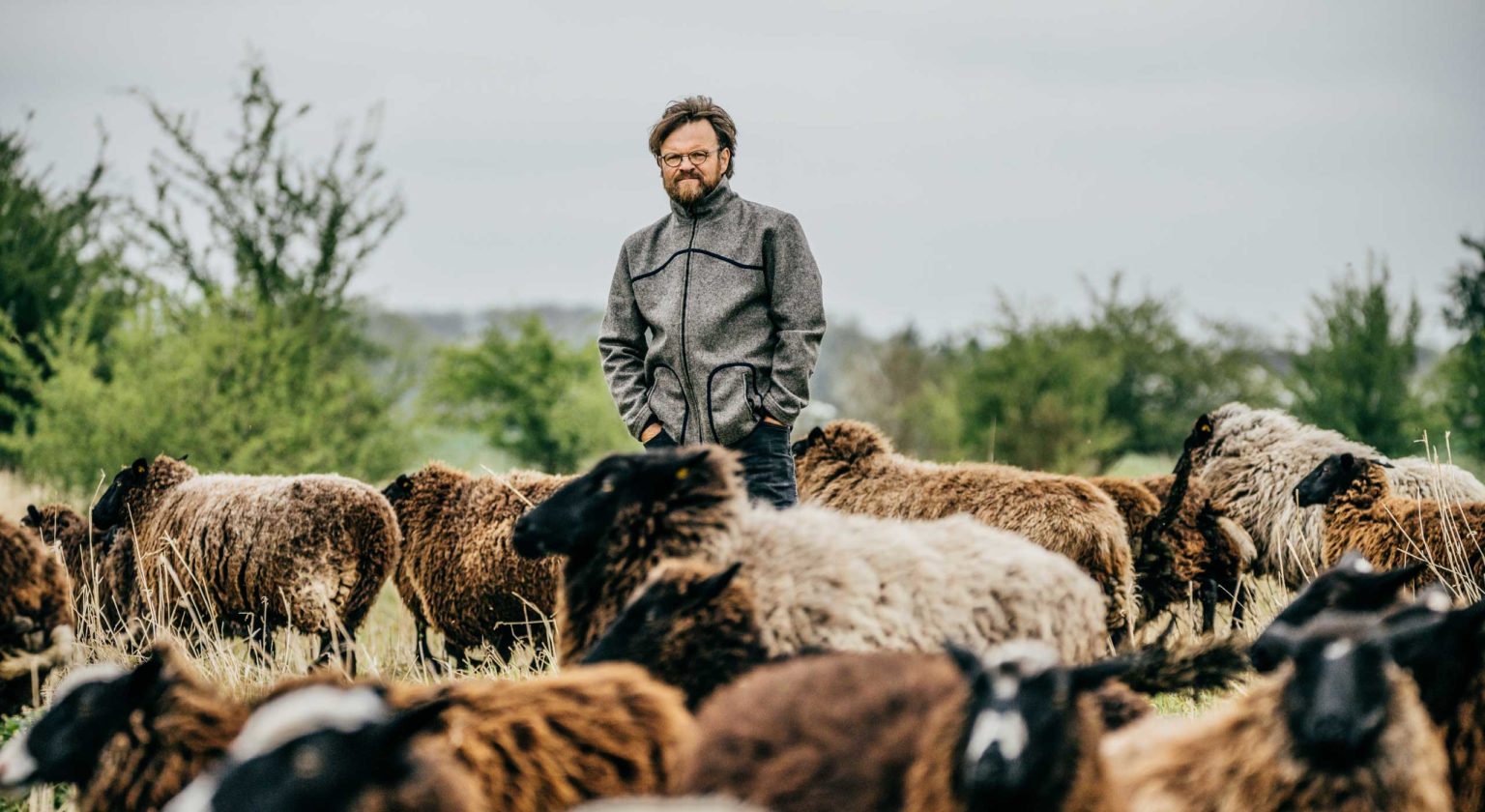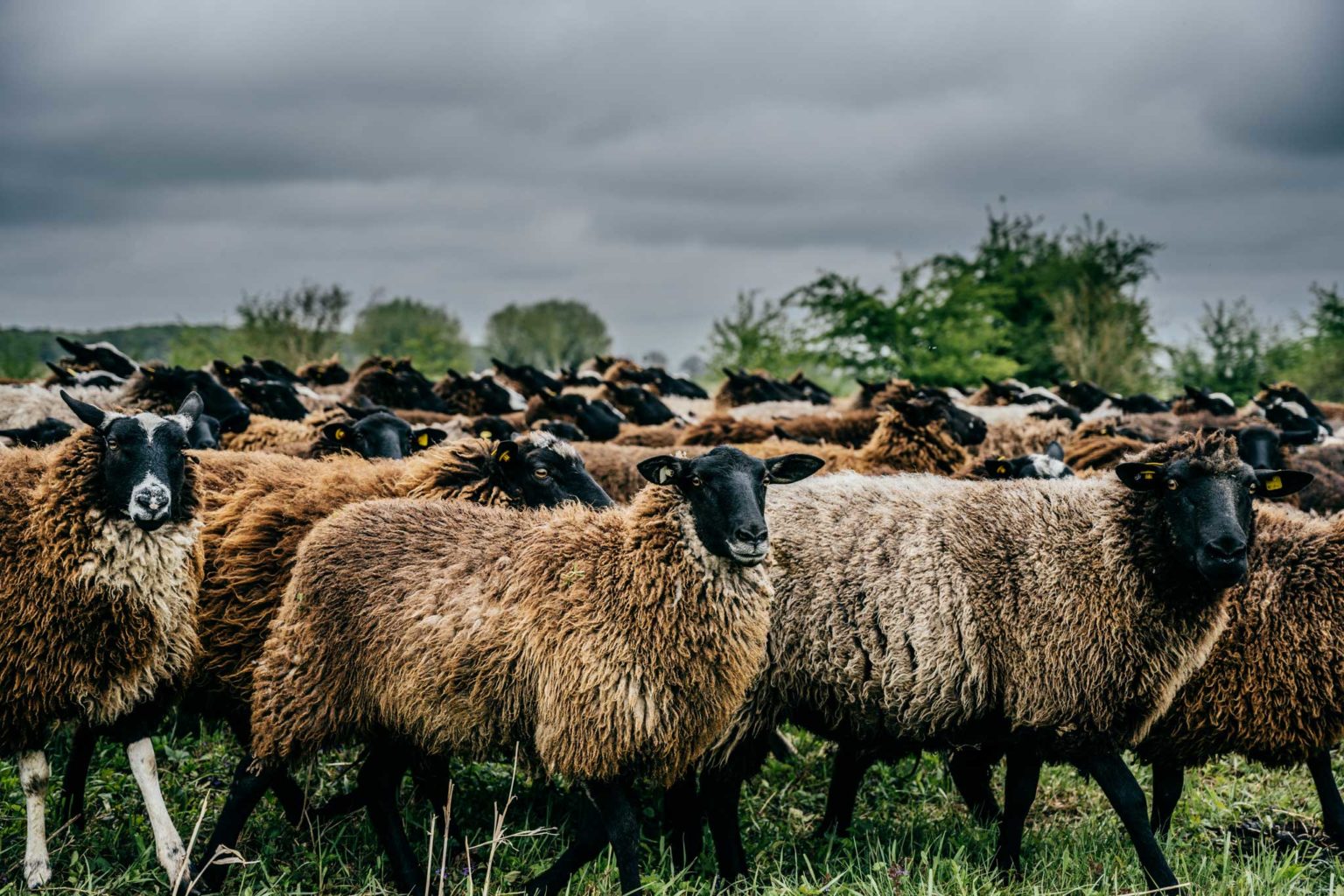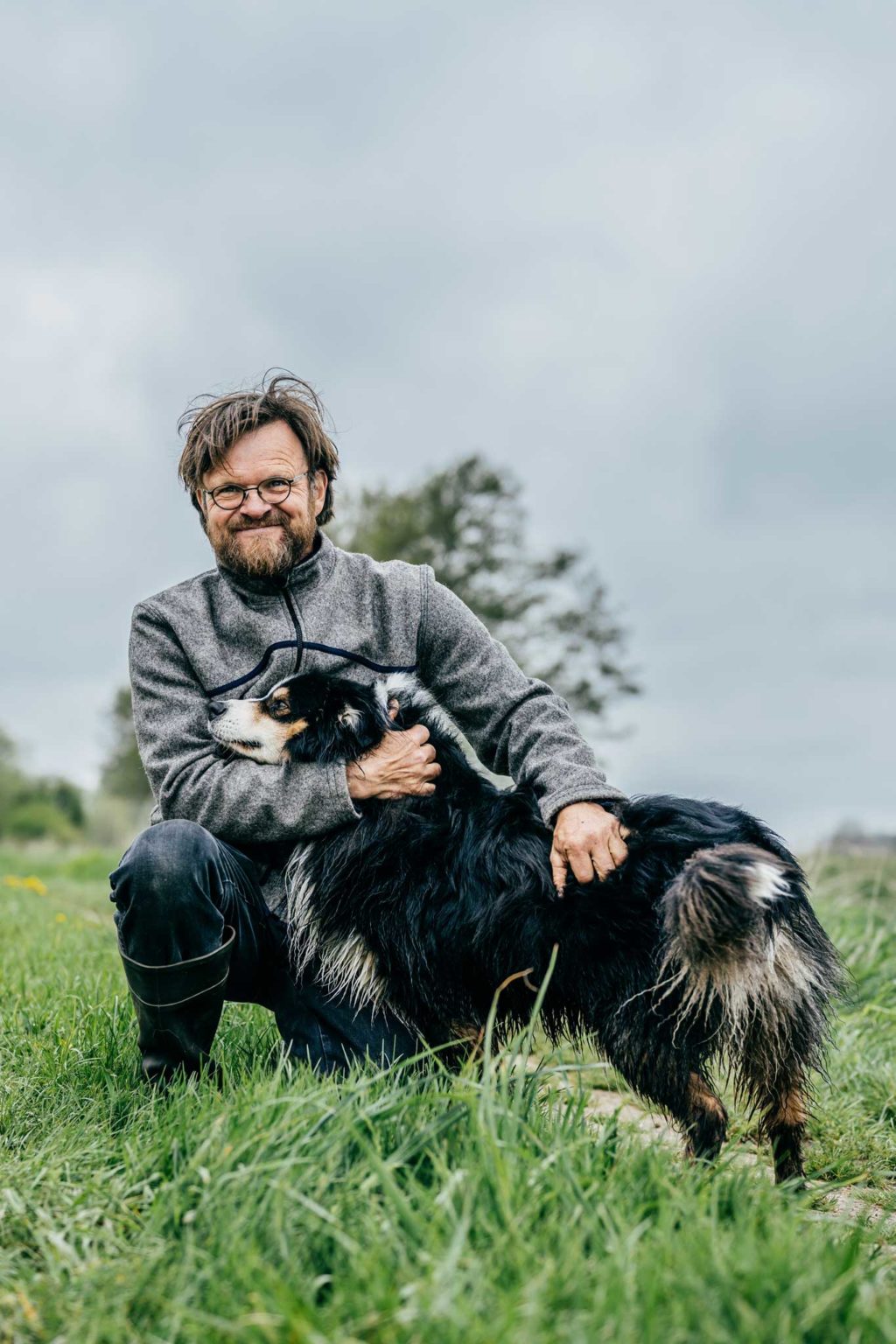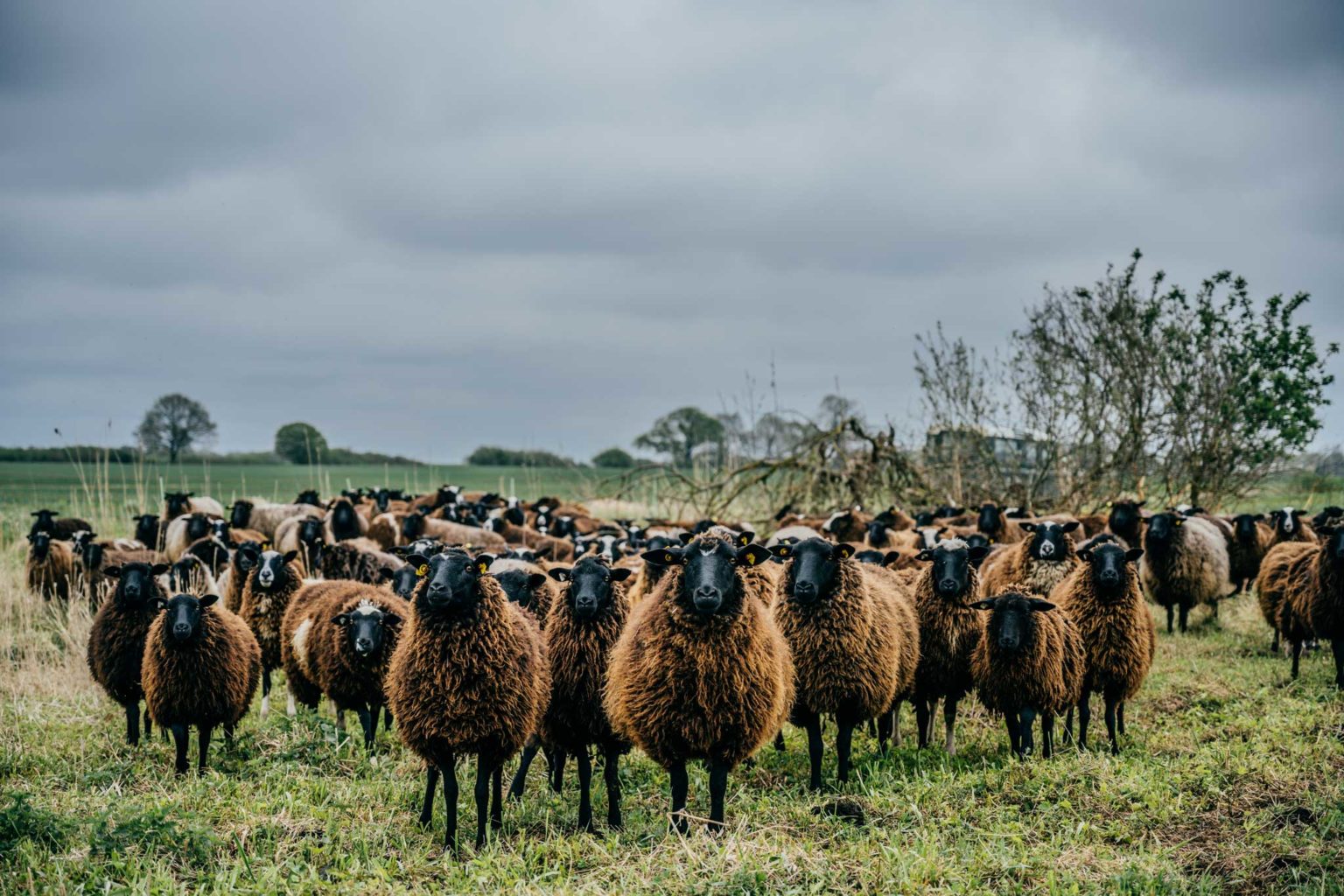
Detlef Mohr
On the former border strip at the Schaalsee - the so-called death strip - you now find sheep instead of mines; the green strip that used to separate East and West Germany runs through the entire country. To this day it is almost completely undeveloped. And to prevent the landscape from becoming overgrown, it is grazed by flocks of sheep among others by flocks of our shepherd Detlef Mohr.
He grew up on the west side of the Schaalsee - specifically in Ratzeburg. Half of the lake belonged to the Lauenburg Lakes Nature Park before the border was opened, as did many other smaller lakes. When the border opened, Detlef was very tempted to look around the eastern side of the Schaalsee as well and at some point it became interesting to look around for a farm there. So in 1995 he moved from Schleswig-Holstein to Mecklenburg Vorpommern and came here to his current home; a wonderfully idyllic spot, with his flock of about 600 sheep at the time.
He started his career as a shepherd with a nature conservation foundation. The foundation was desperate to have a herd of Heidschnucken which he then grew it. At some point, this project gave rise to Detlef's independence and the desire to finally acquire his own flock of Pomeranian sheep. However, the Pomeranian sheep was a long way off for West German shepherds, as it was an East German breed. Only a few shepherds in the West had taken breeding animals from the GDR. He too - when the border was still closed - actually went to Rügen once and looked at remaining stock there as he had grown more passionate about this rare, special breed.

Detlef is very attached to nature and therefore to nature conservation and found the Pomeranian Landschaf with this grey wool particularly original. He also liked the fact that it is a really old, robust and nice-looking breed. In the end, he didn't get any animals from the GDR, but checked out some shepherds in West Germany who had already built up small flocks of Pomeranian sheep. So his love for this breed did not remain theoretical, but from then on a small flock slowly grew up on his farm. He owes the special colouring of his Pomeranian sheep to a ram of Jacob's sheep, which he once introduced to his ewes.
About 25 years ago, GEH - the Society for the Preservation of Old Domestic Animal Breeds - initiated the Arche Hof project. The aim of the project is to keep the more than 100 breeds on the "Red List of endangered livestock breeds" in agricultural production, to make targeted use of their performance potential and their special characteristics and thus to ensure their long-term preservation. Detlef joined GEH, became an Ark Farm and his herd was diversely expanded with red list breeds. Among others, Coburger Fuchsschafe were added and the grey Heidschnucken herd became a white Heidschnucken herd.
At some point, however, the shoe pinched on him financially as well. Because if you only farm with land sheep breeds, the yield is much lower than with economic breeds. That is why some meat sheep breeds were added to his flock at the same time.

"I CAME TO MY PROFESSION THROUGH A CHILDHOOD PASSION FOR ANIMALS. I WAS ALWAYS CONSIDERED THE ANIMAL LOVER IN THE FAMILY WITH SIX CHILDREN. ON MY BEDROOM DOOR IT SAID "DETLEF, THE ANIMAL LOVER, LIVES HERE". I HAD RABBITS, A SMALL MOUSE FARM, A TAME JACKDAW.
SOMETIME BEFORE I LEFT MY PARENTS' HOUSE, I HAD MY FIRST SHEEP IN MY PARENTS' GARDEN, BECAUSE I ALWAYS HAD TO MOW THE LAWN.
Detlef divides his sheep into ten to twelve flocks so that he can graze various locations at the same time. The daily task is mainly to control all the flocks. Taking care of the animals' health, such as cutting hooves or administering worming treatments, is also part of being a shepherd. He shares this work with his co-worker.
As the manager of his shepherd's farm, he takes care of the wool and meat sales and the contact with the authorities with whom one has to deal as a shepherd. As a shepherd who runs wandering flocks, he maintains contact with the farmers in the region. Throughout the winter he is on the move on other people's land, and this has to be agreed and planned with the farmers. The shepherds are given the use of the land, and in the best case it is a win-win situation for all concerned. The sheep graze any overhanging grass from the fields in winter, which is beneficial for the growth of the grass in spring. Intercrop plants are also grazed. This saves the farmer from having to mulch.
In summer, more than 90 per cent of his herds stay on nature conservation areas. Always in consultation with the corresponding Nature Conservation Organisations/institutions. He has fixed leases with them, for which he also has to pay a small amount for rent. However, since there are restrictions on the management of the areas due to nature conservation, there are subsidies for this extensive form of grazing, so that financial profits are also made from such areas.
THE CHALLENGES
The extremely dry, sandy areas, where no fodder actually grows to feed the animals, pose land-related challenges. Nevertheless, nature conservation wants grazing there because these areas are otherwise usually overgrown with birch trees. The sheep are supposed to prevent this. This is a real challenge, because on such areas there is no benefit for the animals, but a positive effect for nature - from the point of view of nature conservation.
Even the very wet areas, such as an orchid meadow that Detlef grazes with his sheep, are not without problems. This may only be entered from the middle/end of August and then the area is full of overhanging grass and young growth from trees that are to be browsed. You have to force the sheep a bit. At this time of year there would be much better areas where the sheep would grow fat and round. Feeding is prohibited on nature conservation sites, as the sheep should eat the biomass they find as much as possible. However, such sites are an exception, there he is only for a limited time and then just does the job for nature conservation. A tightrope walk between animal welfare and nature conservation.
Other challenges are, of course, the weather. When the shepherd thinks back to the extremely dry year of 2018, he remembers the worries he had because he really didn't know where to feed the sheep anymore. Extremely wet winters are no fun either. The sheep are outside all year round and cold doesn't bother the animals at all. But constant wetness and soggy surfaces are an abomination.
"It's fun, and I don't want to complain too much, but you do have to do a lot of wheeling and dealing. And just looking over the sheep for an hour and letting your mind wander, that's something you don't get enough of."

